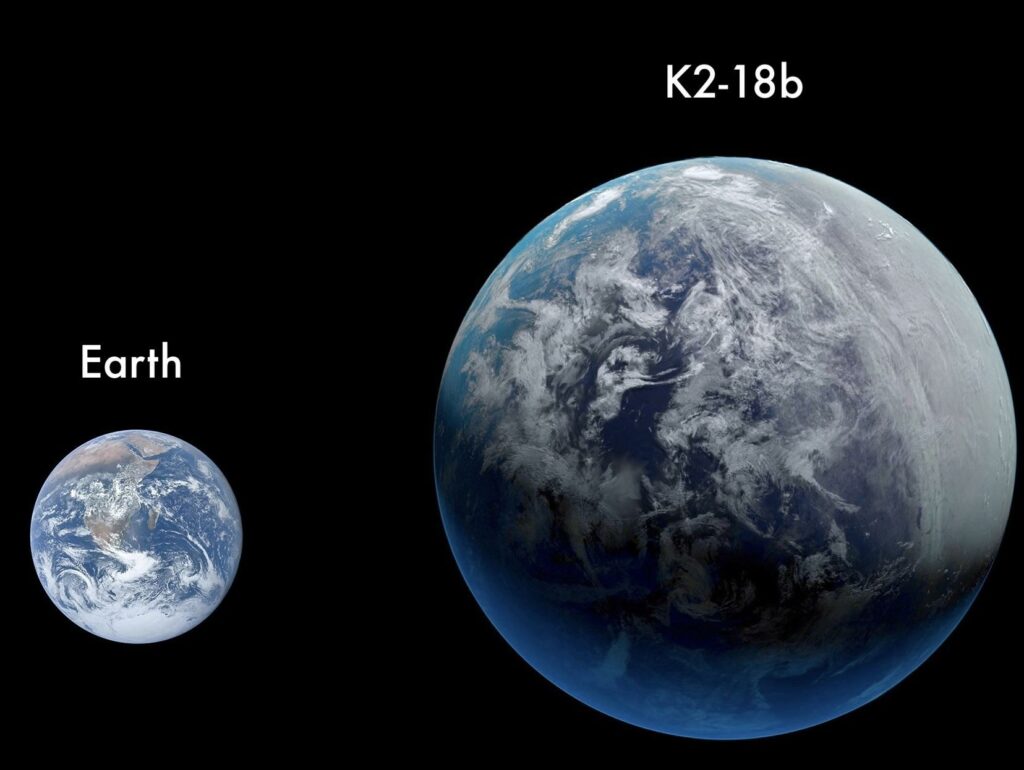
Picture shows rendered comparison between Earth and K2-18 b.
The James Webb Space Telescope has found evidence of carbon-bearing molecules, specifically methane and carbon dioxide, in the atmosphere of the habitable zone exoplanet K2-18 b. NASA has indicated that the James Webb Space Telescope may have detected a molecule in the atmosphere of a distant exoplanet, which on Earth is only produced by life.
The planet K2-18 b has been the subject of extensive study since astronomers announced in 2019 that they found potential signs of water vapour in its atmosphere.
Orbiting a red dwarf star in the constellation Leo, around 120 light-years from our own solar system, the planet is 8.6 times as massive as Earth.
A subsequent study which looked at the same data then suggested the water vapours might actually be methane.
Now, the James Webb Telescope has turned its even more powerful sights on the planet, providing a trove of new data.
It found the presence of carbon-bearing molecules – which include methane and carbon dioxide – which is fuelling speculation that K2-18 b might have a hydrogen-rich atmosphere and a water ocean-covered surface.
These features could potentially be signs of a planet that could bear life.






Comments